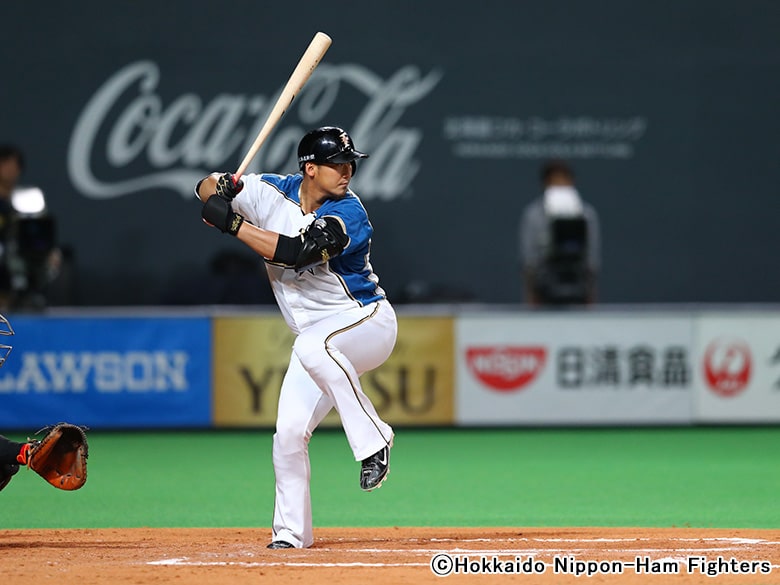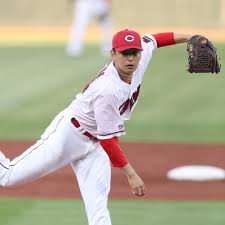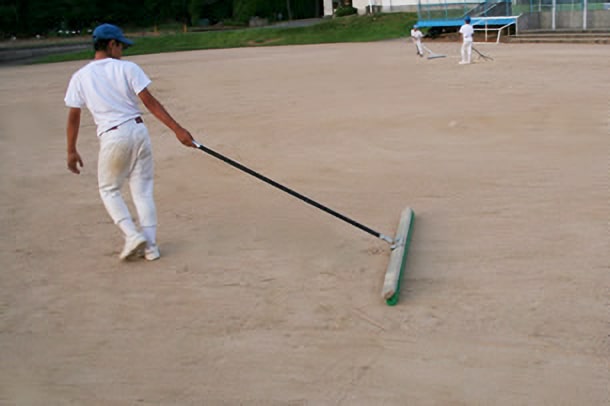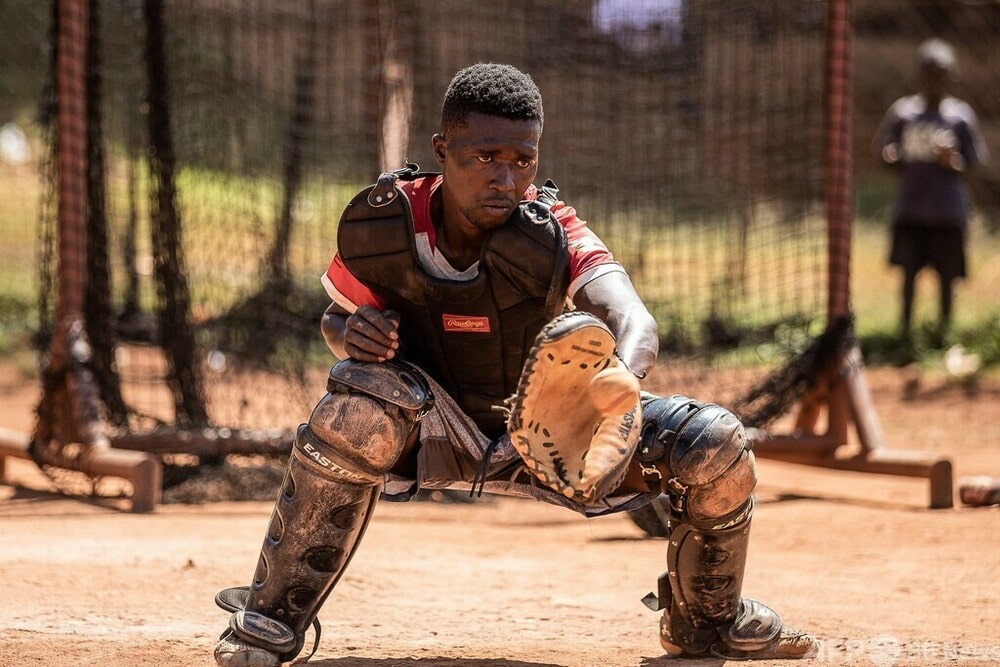
Baseball is one of the most popular sports in the world, and its game format has its own unique rules.
Among these rules, the “ending in the top of the ninth inning” rule is familiar to many fans and players.
But why do baseball games end in the top of the ninth inning? The reasons and background for this are deeply connected to historical circumstances and the characteristics of the sport.
This article covers a wide range of topics, from the basic rules of baseball to the meaning of the top of the ninth inning, the conditions for ending a game, the rules for extra innings, and examples of historical games.
This will deepen your understanding of baseball’s appeal and strategy, making watching the game even more enjoyable.
First, let’s look at the basic rules of baseball and what the top of the ninth inning means.
目次
- 1 Basic rules of baseball and the meaning of the top of the 9th inning
- 2 Conditions for the game to end in the top of the 9th inning
- 3 Rules for going into extra time
- 4 Historic match examples
- 5 Strategy to end the game in the top of the ninth inning
- 6 The difference between professional and amateur baseball
- 7 The charm of baseball and the drama of the top of the ninth inning
Basic rules of baseball and the meaning of the top of the 9th inning
Baseball is a sport loved all over the world, and its rules and format have their own unique appeal.
Among these, the rule that the game must end in the top of the ninth inning is a particularly important factor.
Here we will explain in detail the basic rules of baseball, the game format, and the definition and role of the top of the ninth inning.
Baseball game format and rules
Baseball is a sport in which nine players each play defense and bat.
A game consists of nine innings, with each inning divided into two half-innings, one for offense and one for defense.
Below is an overview of the basic match format and rules.
-
Innings Structure :
- Each inning is divided into two parts: attack and defense. The first attack is called the “top” and the second attack is called the “bottom”.
- Games usually last nine innings, but may go into extra innings if the score is tied. Extra innings continue until a winner is decided.
-
Attack and Defense :
- The offensive team’s goal is for the batter to hit the ball thrown by the pitcher and run around the bases to score. The defensive team’s goal is for the pitcher to prevent the attack by getting the batter out.
- Once three outs have been achieved in each inning, the teams switch sides and the next half inning begins.
-
How to score :
- A runner scores one point when he runs through all the bases and returns to home plate. A home run can score multiple points at once if the batter returns directly to home plate.
- The team with the most points at the end of the match wins.
-
How to get an out :
- An out can be made in a variety of ways: the batter strikes out, the ball is caught as a fly ball, or the runner is tagged out between the bases.
- For the defense, the key to victory is how quickly they can get three outs.
Definition and role of the top of the 9th inning
The top of the ninth is the final offensive half-inning in a baseball game.
The importance of this innings makes it especially tense as it is likely to determine the outcome of the match.
Below, we will explain in detail the definition of the top of the ninth inning and its role.
-
Final Innings Role :
- The top of the ninth inning is the final inning of a regular game. If there is a score difference at the end of the top of the ninth inning and the leading team is on the defensive, the game ends at that point.
- The offensive team in the top of the ninth inning has one last chance to score and potentially turn the game around.
-
End of match conditions :
- If the top of the ninth inning ends and the leading team is still ahead, the game ends at that point. This means that there will be no further batting in the bottom of the ninth, and the leading team is declared the winner.
- On the other hand, if the game is tied or there is no lead, the team will attack in the bottom of the ninth inning, and if the game is still tied, the game will go into extra innings.
-
Tactics matter :
- In the top of the ninth inning, the tactics of the offensive and defensive teams will greatly affect the outcome of the game. The offensive team aims for hits and home runs, and aims to advance runners to score. On the other hand, the defensive team does everything in their power to ensure that they get outs and prevent the other team from scoring.
- The top of the ninth inning is the climax of the game and one of the highlights for spectators. It’s a moment of rising tension and excitement, as spectators wait to see how the game will turn out.
-
Impact on overtime :
- If the game is still tied in the top of the ninth inning, the game will go into extra innings. In extra innings, the offense and defense will be the same as in normal innings, and the game will continue until a winner is decided.
- Whether or not the game goes into extra innings depends on the result in the top of the ninth inning, and plays in this inning can have a big impact on the entire game.
Thus, the top of the ninth inning plays a very important role in a baseball game.
Next, let’s take a closer look at the conditions for a game to end in the top of the ninth inning.

Conditions for the game to end in the top of the 9th inning
In a baseball game, there are several factors that determine whether the game ends in the top of the ninth inning.
Here we will explain in detail when the point difference is decisive and when the game ends based on the rules.
When the points difference is decisive
One condition for a game to end in the top of the ninth inning is if the score difference is decisive.
In this situation, the winning team is assured when they finish their attack in the top of the ninth inning.
-
When the leading team’s attack ends :
- If the team that is leading at the top of the 9th inning is batting first, the game will end when the top of the 9th inning ends and there is no further batting in the bottom of the 9th inning. In other words, if the batting first team completes their batting in the top of the 9th inning while maintaining their lead, the game will end without waiting for the bottom of the 9th inning.
-
If you’re leading by a large margin :
- If the score difference is large at the end of the top of the ninth inning, it may be judged that the team batting second has very little chance of making a comeback. In this case, the game may be declared over. This is especially the case in amateur and amateur baseball.
- In professional baseball, it is common for games to be played until the end, but if there is a large lead, it does not have a significant impact on the course of the game.
-
Tactics to maintain your lead :
- Leading teams will typically use their tactics to try to score additional runs in the top of the ninth inning, which will give them an even more advantageous position and ensure the end of the game.
- Especially if the defense can widen the score gap in the top of the ninth inning, it will be able to minimize risk and finish the game.
Decision on the end of a match based on rules
Whether a baseball game ends in the top of the ninth inning is determined based on official rules.
Below are the official criteria for determining when a match is over:
-
Official Rules Ending :
- According to the official rules of baseball, if the top of the ninth inning ends and the score is in favor of the leading team, the game ends at that point. If the team batting second is leading, there is no batting in the bottom of the ninth inning.
- This rule is in place to keep the game fair and efficient, and to avoid unnecessary overtime in situations where the leading team is sure to win.
-
Referee’s decision :
- The end of the game is officially decided by the umpire’s judgment. The umpire will declare the team that is leading at the end of the top of the ninth inning as the winner, according to the official rules.
- The referee may also decide to end the match depending on the weather and the progress of the match. For example, if the weather is too bad to continue the match, the referee may decide to end the match.
-
Special and Tournament Rules :
- Certain tournaments and leagues may have their own special rules, for example, tiebreakers or called games may have different ending conditions in the top of the ninth inning.
- If special rules apply according to the tournament regulations, the match will end according to those rules. These special rules are common, especially in amateur tournaments and regional leagues.
-
Match Time Limits :
- Some leagues and tournaments may have time limits on games. If a game runs long and the time limit is reached, a decision may be made to end the game in the top of the ninth inning.
- Matches will be run with time constraints in mind, especially if they are affected by television coverage or facility hours.
Based on these conditions, a baseball game can end in the top of the ninth inning.
Next, let’s take a closer look at the rules regarding overtime.

Rules for going into extra time
If a baseball game is not decided after the ninth inning, it may go into extra innings.
Overtime is played under special rules and continues until a winner is decided.
Here we will explain in detail the basic rules of overtime, as well as the conditions and reasons for going into overtime.
Basic rules for overtime
Extra innings are played if the score is tied after the normal 9 innings.
During overtime, the game will proceed according to the following basic rules:
-
Extra Innings :
- In extra innings, the offense and defense play is the same as in normal innings. The offensive and defensive teams alternate plays and continue attacking until three outs are reached.
- An unlimited number of innings will be added until a winner is decided. Normally, the offense and defense switch after each inning, and if the game continues with the score tied, additional innings will be added.
-
Special rules apply :
- In some leagues or tournaments, special rules may apply to extra innings. For example, if a tiebreaker system is in place, extra innings may start with runners on base.
- The tiebreak system makes it easier to score points, so it is expected that overtime will be decided quickly. This system is sometimes used to make the progress of the match smoother.
-
Pitcher usage and restrictions :
- In extra innings, the selection of pitchers is an important point. Because the game will drag on, it is necessary to select pitchers appropriately, taking into consideration the stamina of the pitcher and the risk of pitching consecutive games.
- Some leagues and tournaments may impose restrictions on pitchers’ use in extra innings, such as restricting a pitcher who has pitched a certain number of innings from pitching in the next game.
-
Defensive and offensive strategies :
- In extra innings, defensive and batting strategies play a major role in determining the outcome of the game. Tactics such as bunts and hit-and-runs are actively employed, especially when runners are in scoring position.
- The defense also needs to flexibly change its defensive position to find the best position to prevent the opposing team’s attacks. In particular, it is important to adjust the infield shifts and outfield defensive positions.
Conditions for going into overtime and reasons for doing so
In order for a game to go into overtime, certain conditions must be met.
Below we will explain in more detail the conditions for going into overtime and why.
-
In case of a tie :
- If the score is tied after nine innings, extra innings will be played to avoid ending the game with a tied score and to determine the winner.
- The purpose of overtime is to settle the match and determine which team will be victorious.
-
Official Rules Apply :
- The official rules of baseball do not allow a game to end in a tie, so extra innings are always played in official games, and the game continues until a winner is decided.
- However, in certain tournaments or leagues, ties may be allowed. In this case, if the game is still tied after the required number of innings, it will be treated as a tie.
-
Tournament and League Regulations :
- Each tournament or league has its own regulations and rules regarding extra innings. For example, in high school baseball tournaments, a tie-breaker system may be applied if a game goes beyond a certain number of innings.
- In professional baseball and major league baseball, extra innings are generally played without limit, but certain leagues or tournaments may have a maximum number of innings allowed in extra innings.
-
Smooth match progress :
- The overtime rule is also in place to ensure the smooth progress of the match. The introduction of the tiebreak system in particular is effective in preventing long matches.
- If extra time goes on for a long time, players’ physical strength and spectator fatigue must also be taken into consideration, so rules are needed to bring the game to a quick conclusion.
-
Spectators’ expectations and excitement :
- Extra time also brings great excitement to the spectators. If the game continues with the score tied and it is unclear which team will win, it increases the spectators’ anticipation and makes the game more interesting.
- Going into extra time is sure to add to the drama of the match and provide some unforgettable moments for fans.
Overtime will be played based on these rules and conditions.
Next, let’s take a closer look at some historical match examples.

Historic match examples
Baseball history is full of famous games that were decided in the top of the ninth inning or dramatic matches that went into extra innings.
These games have become unforgettable moments for baseball fans and have provided a lot of excitement and emotion.
Here we will take a closer look at the famous game that was decided in the top of the ninth inning and the historic match that went into extra innings.
A great match decided in the top of the ninth inning
The moment when the game is decided in the top of the ninth inning is one of the most exciting parts of baseball.
This is a crucial moment in which the players’ skills and mental strength are put to the test as the game decides the outcome.
Below we introduce some historic games that were decided in the top of the ninth inning.
-
1988 World Series Game 1 :
- Kirk Gibson’s pinch-hit home run was the defining moment in a game between the Los Angeles Dodgers and the Oakland Athletics. Despite playing with injuries to both legs, Gibson hit a dramatic game-winning home run in the top of the ninth inning to give the Dodgers the win.
- This game is widely known for Gibson’s indomitable spirit and dramatic comeback, making it one of the greatest games in baseball history.
-
2001 World Series, Game 4 :
- Torrey Rose hit a dramatic walk-off home run in the top of the ninth inning against the Arizona Diamondbacks and New York Yankees, giving the Yankees a come-from-behind victory and bringing the series back to square one.
- Rose’s hit became an unforgettable moment for Yankees fans and is remembered as a dramatic turn of events.
-
2016 World Series Game 7 :
- In the top of the ninth inning, Rajai Davis hit a game-tying home run against the Chicago Cubs and the Cleveland Indians, sending the game into extra innings and seemingly ending the Cubs’ long wait for a championship.
- The Cubs ultimately won in extra innings, winning their first World Series title in 108 years. This game was a historic one, with a dramatic turn of events in the top of the ninth inning and a game that was decided in extra innings.
A historic match that went into extra time
When a match goes into overtime, it’s a test of the players’ stamina and concentration.
The drama that unfolds as the outcome is hard to determine and both teams give it their all is emblematic of the appeal of baseball.
Below are some historic games that went into overtime.
-
2004 American League Championship Series (ALCS), Game 4 :
- The Boston Red Sox won a dramatic walk-off victory in the 12th inning of a game against the New York Yankees. This game marked the beginning of a Red Sox comeback from a three-game losing streak that ultimately led to the series victory.
- David Ortiz’s walk-off hit symbolized the team’s comeback and became an unforgettable moment for Red Sox fans.
-
1991 World Series Game 7 :
- Jean L’Arc’s walk-off hit in the 10th inning of a Minnesota Twins vs. Atlanta Braves game was the decisive moment. This game is known as the one in which the Twins won the World Series.
- The game featured a tense pitching battle, and the dramatic walk-off victory in extra innings gave the fans great excitement.
-
2014 Wild Card Game :
- The Kansas City Royals won a dramatic comeback victory in the 12th inning of a game against the Oakland Athletics. This game was a key one for the Royals as they took their first step towards a World Series appearance.
- This was a dramatic game, with consecutive runs in extra innings and a walk-off hit, making it an unforgettable one for the spectators.
-
1986 National League Championship Series (NLCS), Game 6 :
- The New York Mets won a dramatic walk-off victory in the 16th inning of the game against the Houston Astros, a game that is widely considered to be the game that clinched the Mets’ place in the World Series.
- This game was notable for the dramatic overtime play and tenacious play from both teams, making it one of the greatest games in baseball history.
These games, with their dramatic developments in the top of the ninth inning and extra innings, bring out the best in baseball and provide unforgettable moments for fans.
Next, let’s take a closer look at strategies for ending the game in the top of the ninth inning.

Strategy to end the game in the top of the ninth inning
Whether a baseball game ends in the top of the ninth inning depends on the strategies of both teams.
The top of the ninth inning in particular is the climax of the game, and the strategies of the defensive and offensive teams will greatly affect the outcome of the game.
Here we will explain in detail the strategies for the defensive and offensive sides.
Defensive Strategy
For the defense, the top of the ninth inning is the final stage to close out the game.
There are some key strategies to protect your lead in this innings.
-
Closer selection :
- In the top of the ninth inning, an ace pitcher, usually a closer, takes to the mound and is expected to provide stable pitching in the final stages of the game and protect the lead.
- The closer must be reliable and experienced, with a high strike rate and powerful pitch.
-
Defensive position adjustments :
- In the top of the ninth inning, it is important to adjust your defensive position. By analyzing the characteristics and tendencies of the opposing batter and making appropriate defensive shifts, it will be easier to prevent hits.
- In particular, by changing the defensive position of the infield, you can prevent bunts and infield hits. The outfielders must also be positioned appropriately to prevent long hits.
-
Battery Tactics :
- The pitcher and catcher battery plan meticulous tactics, using pitches that target the batter’s weaknesses and effective curveballs to suppress the batter.
- Pitching to the edge of the strike zone and changing the rhythm to confuse the batter are effective. The catcher’s lead plays an important role.
-
Avoid mistakes :
- In the top of the ninth inning, a defensive mistake can have devastating consequences, so it’s important to play solid defense and avoid errors.
- It is important to strengthen the teamwork between infielders and outfielders and to communicate effectively to ensure that outs are made. Quick and accurate play is especially important when there are runners on base.
-
Relief Pitcher Preparation :
- It is also important to have a relief pitcher ready in case the closer is hit, etc. It is necessary to make quick pitcher changes and control the game.
- We will determine the best timing to conserve and use relief pitchers and assign the most suitable pitching staff.
Attacker’s strategy
The top of the ninth inning is the offensive team’s last chance.
An effective strategy is needed to score runs and turn the tide in this innings.
-
Leadoff hitter selection :
- The most important role of the leadoff hitter in the top of the ninth inning is to get on base. By using a batter with a high on-base percentage or a player who is good at bunting, you can increase the chances of getting on base.
- By having a leadoff hitter on base, it puts pressure on the subsequent batters and increases the chances of scoring.
-
Sacrifice bunts and hit and runs :
- When a runner is on base, tactics such as sacrifice bunts and hit-and-runs are actively adopted. The goal is to advance the runner to scoring position with a sacrifice bunt, and to send the runner home with a hit-and-run.
- In order to increase the success rate of bunting, players with excellent bunting skills are used to ensure that runners advance.
-
Pinch hitter used :
- The offensive team may use pinch hitters at key times, particularly when targeting strong hitters or favorable left-handed vs. right-handed matchups, to increase their chances of scoring.
- Pinch hitters are expected to hit the ball that will change the flow of the game, so they are expected to perform under pressure.
-
Aggressive base running :
- In the top of the ninth inning, aggressive base running is also an important strategy. By making full use of stealing bases and end runs, you can put pressure on the defense and induce them to make mistakes.
- In particular, fast runners are used to exploit gaps in the defense and advance to additional bases. Accurate judgment and timing are required to prevent base running mistakes.
-
Use psychological pressure :
- The top of the ninth inning is a time of high psychological pressure. The offensive team takes advantage of this pressure and plays aggressively.
- If the pitcher or defense is nervous, you can aim for a hit early in the count or a hard hit ball to change the flow of the game.
-
Thorough sign play :
- The team will follow the signs given by the manager and coaches and execute a consistent strategy as a team. They will aim to score points by accurately communicating and executing signs such as bunts, steals, and hit-and-runs.
- To prevent any mistakes in signs, communication between players will be strengthened through pre-game checks and practice sessions.
Utilizing these strategies will make the top of the ninth inning tense and exciting.
Next, let’s take a closer look at the differences in the rules for ending a game between professional baseball and amateur baseball.

The difference between professional and amateur baseball
There are two main categories of baseball, professional and amateur, and each has different rules for ending a game.
These rule differences are important factors for players and fans as they affect game progress and strategy.
Here we will explain in detail the differences in the rules for ending a game between professional baseball and amateur baseball.
Rules for ending professional baseball games
In professional baseball, there are strict rules regarding the end of a game.
In particular, there are many regulations in place to maintain the fairness of the match and the quality of the competition.
-
Game Ended in the 9th Inning :
- Professional baseball games usually last nine innings. The team that is leading at the end of the ninth inning wins. If the team is leading at the top of the ninth inning, the bottom of the ninth inning will not be played.
- If the score is tied after the top of the ninth inning, the bottom of the ninth inning will be played, and if the score is still tied at that point, the game will go into extra innings.
-
Overtime rules :
- In professional baseball, when extra innings are played, they usually last 12 or 15 innings. The maximum number of innings allowed in extra innings may vary depending on the rules of each league or tournament.
- Some leagues have a maximum number of extra innings due to game time constraints. In Nippon Professional Baseball (NPB), extra innings are limited to a maximum of 12 innings during the regular season.
-
Cold Game :
- In professional baseball, a cold game may be called under certain circumstances, such as when the score is too large or when bad weather makes it difficult to continue the game.
- The application of a cold game is mainly based on the rules of the tournament or league. Generally, it is applied when five or more innings have been completed.
-
Match replays :
- In professional baseball, if a game is canceled due to rain or other reasons, a rematch may be held. The rules for rematches follow the regulations of each league or tournament.
- A replay will be played from the beginning like a normal match, with no results or situations from the previous match carrying over.
Rules for ending an amateur baseball game
Amateur baseball often has different rules than professional baseball, especially with regards to the end of the game.
This includes special rules to take into account player safety and game progress.
-
Frequency of cold games :
- In amateur baseball, games are called off relatively frequently, especially when there is a large lead or to ensure the game progresses smoothly.
- It is usually applied when there is a certain point difference at the end of the 5th or 7th inning. The specific point difference and applicable conditions vary depending on the tournament and league.
-
time limit :
- Some amateur leagues and tournaments may impose time limits on game times, for example no new innings may start after two and a half hours.
- The purpose of the time limit is to prevent players from getting tired and to ensure the smooth progress of the match. It also takes into account facility usage times and lighting.
-
Tie-break system :
- In amateur baseball, a tiebreaker system is sometimes introduced when the game goes into extra innings due to a tied score. Under this system, extra innings start with runners on base, making it easier to score runs.
- The tiebreak system is introduced to prevent games from dragging on and to settle them quickly, and is particularly common in high school and college baseball tournaments.
-
Abortion and replay :
- In amateur baseball, if a game is cancelled due to rain or other reasons, a rematch may be held. The rules for rematches are based on the rules of the tournament or league.
- A replay will be played from the beginning like a normal match, with no results or situations from the previous match carrying over.
-
Player selections and substitutions :
- In amateur baseball, strict rules regarding substitutions and use are often established for the safety and development of players. In particular, there are often restrictions on consecutive pitches and the number of pitches a pitcher can throw.
- The aim is to maintain the quality of the matches while protecting the health of the players.
These rule differences have a significant impact on game management and strategy in professional and amateur baseball.
Now let’s take a closer look at the drama and excitement that the top of the ninth inning generates.

The charm of baseball and the drama of the top of the ninth inning
The top of the ninth inning in a baseball game is a time that produces some particularly dramatic and exciting moments.
The top of the ninth inning holds a special meaning for many fans and players.
Here we take a closer look at the drama and excitement the top of the ninth inning creates and what it means to fans.
The top of the ninth inning creates drama and excitement
The top of the ninth inning is a crucial moment where the final battle of the game unfolds.
This innings will be filled with special tension and anticipation, creating a lot of drama.
-
Potential comebacks :
- The top of the ninth inning is the last chance for the offensive team. A comeback in this inning brings great excitement to the spectators. The sight of the team coming together to score and turn the game around is captivating to many fans.
- In the past, there have been many records of dramatic comeback home runs in the top of the ninth inning and come-from-behind victories with consecutive hits. These moments will go down in baseball history as memorable scenes.
-
Confronting the closer :
- In the top of the ninth inning, the closer of the defensive team usually takes to the mound. The confrontation between the closer and the offensive team’s batter is a tense and important moment that can determine the outcome of the game.
- The highlight of the game is how the batters respond to the closer’s fastballs and sharp curveballs. Each pitch determines the outcome, keeping the crowd glued to their seats.
-
Defensive tension :
- The top of the ninth inning is also a particularly tense time for the defense. In order to protect their lead, they must make sure they get outs without making any mistakes. Defensive players make split-second decisions to close out the game.
- The moment when a double play or fine play occurs is a big highlight for the spectators. The solid play of the defense often decides the outcome of the game.
-
Crowd excitement :
- The top of the ninth inning is the moment when the whole stadium reaches its climax. The cheers and support of the spectators come together and give the players great energy. Especially when there is a chance to turn the game around, the stands are instantly engulfed in a whirlwind of excitement.
- This sense of unity and excitement is one of the best parts of watching baseball, and it’s the reason so many fans go to the stadium.
What the top of the ninth inning means to fans
The top of the ninth inning is a moment that holds special meaning for fans.
This inning encapsulates the charm of baseball and is packed with emotion and excitement.
-
Symbol of hope and expectation :
- The top of the ninth inning is a symbol of hope and expectation for fans. No matter how tough the situation, as long as there is still a chance of a comeback in the final innings, fans will not give up and will continue to cheer. It is this hope that gives baseball games their charm, as you never know what will happen until the very end.
- Many fans are hoping for a dramatic turn of events in the top of the ninth inning, and pay close attention to every pitch. The moment when the team achieves a comeback is the greatest joy for fans.
-
Share your thoughts :
- The top of the ninth inning is also a moment when fans share their excitement. Cheering together in the stadium or in front of the TV creates a sense of unity and solidarity. Especially in dramatic moments of victory, fans can share their joy and shout out in joy together.
- Sharing this excitement deepens the bonds between baseball fans, increasing anticipation for the next game and motivation to cheer.
-
Baseball Drama :
- The top of the ninth inning is a moment that symbolizes the drama of baseball. The tension and excitement in the final stage where the outcome is decided has a unique appeal that other sports do not have. This drama is what makes baseball a special sport.
- Fans are excited or disappointed by the players’ performance and feel emotional about the outcome of the game. These emotional ups and downs are what make watching baseball that much more enjoyable.
-
Memorable moments :
- The top of the ninth inning is a memorable moment for many fans. Dramatic victories and comebacks become lifelong memories for fans. Even after the game, fans can talk about the excitement and build up anticipation for the next game.
- In particular, historic games and memorable matches are passed down through the generations and remain in the hearts of fans. This is one of the attractions of baseball and the reason why so many fans love the sport.
The top of the ninth inning is one of the most dramatic and exciting moments in a baseball game.
This moment, when the strategies of the defensive and offensive teams intersect and the fans’ cheers come together, is filled with much excitement and emotion.
For fans, the top of the ninth inning is the best time to experience the thrill of baseball.



